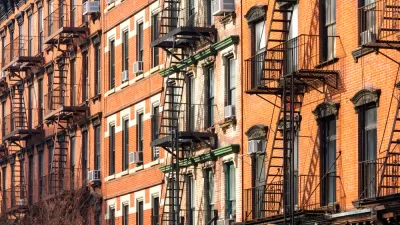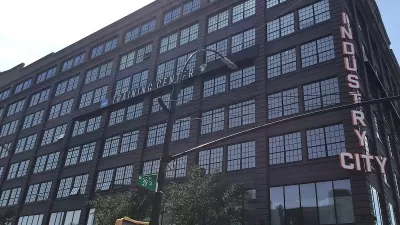The neighborhood of Chelsea in Manhattan, location of the High Line and one of the hottest real estate markets in the city, provides a case study of the wealth gap, with each side living in close proximity.
"Census and city figures show that the average household income in Chelsea, about $140,000, is almost five times the average for households in public housing in the area," according to Mireya Navarro. "The neighborhood now ranks among those in the city with the greatest income inequality, according to the Furman Center for Real Estate and Urban Policy at New York University, as the share of households in the highest income brackets — over $250,000 — has grown."
The article notes the ongoing tension behind two housing initiatives moving forward under the direction of Mayor Bill de Blasio: the upzoning of East New York and a proposal to build new housing on properties controlled by the New York City Housing Authority. Both of those proposals have sparked concerns among residents that they will be displaced by rising costs connected with new developments. Navarri cites Chelsea's example for some perspective on the current controversy affecting those parts of the city.
"In long-gentrified Chelsea, the worst fears have yet to come true. The housing projects — Fulton Houses (between 16th and 19th Streets and Ninth and 10th Avenues) and the neighboring Elliot and Chelsea Houses (in the mid-20s) — with about 2,000 apartments combined, are still there, as they have been since the 1940s (Elliot) and ’60s (Fulton and Chelsea). The brick buildings have deteriorated, however, under the weight of time and as the Housing Authority’s maintenance budget has fallen short, although city officials say they remain committed to preserving public housing."
The article goes onto describe how the dichotomy of income levels impacts the people on the low end of the spectrum—citing some examples of how policy neglects the block-by-block discrepancies of neighborhoods like Chelsea when data is only considered at the ZIP Code level.
FULL STORY: In Chelsea, a Great Wealth Divide

Maui's Vacation Rental Debate Turns Ugly
Verbal attacks, misinformation campaigns and fistfights plague a high-stakes debate to convert thousands of vacation rentals into long-term housing.

Planetizen Federal Action Tracker
A weekly monitor of how Trump’s orders and actions are impacting planners and planning in America.

In Urban Planning, AI Prompting Could be the New Design Thinking
Creativity has long been key to great urban design. What if we see AI as our new creative partner?

King County Supportive Housing Program Offers Hope for Unhoused Residents
The county is taking a ‘Housing First’ approach that prioritizes getting people into housing, then offering wraparound supportive services.

Researchers Use AI to Get Clearer Picture of US Housing
Analysts are using artificial intelligence to supercharge their research by allowing them to comb through data faster. Though these AI tools can be error prone, they save time and housing researchers are optimistic about the future.

Making Shared Micromobility More Inclusive
Cities and shared mobility system operators can do more to include people with disabilities in planning and operations, per a new report.
Urban Design for Planners 1: Software Tools
This six-course series explores essential urban design concepts using open source software and equips planners with the tools they need to participate fully in the urban design process.
Planning for Universal Design
Learn the tools for implementing Universal Design in planning regulations.
planning NEXT
Appalachian Highlands Housing Partners
Gallatin County Department of Planning & Community Development
Mpact (founded as Rail~Volution)
City of Camden Redevelopment Agency
City of Astoria
City of Portland
City of Laramie




























